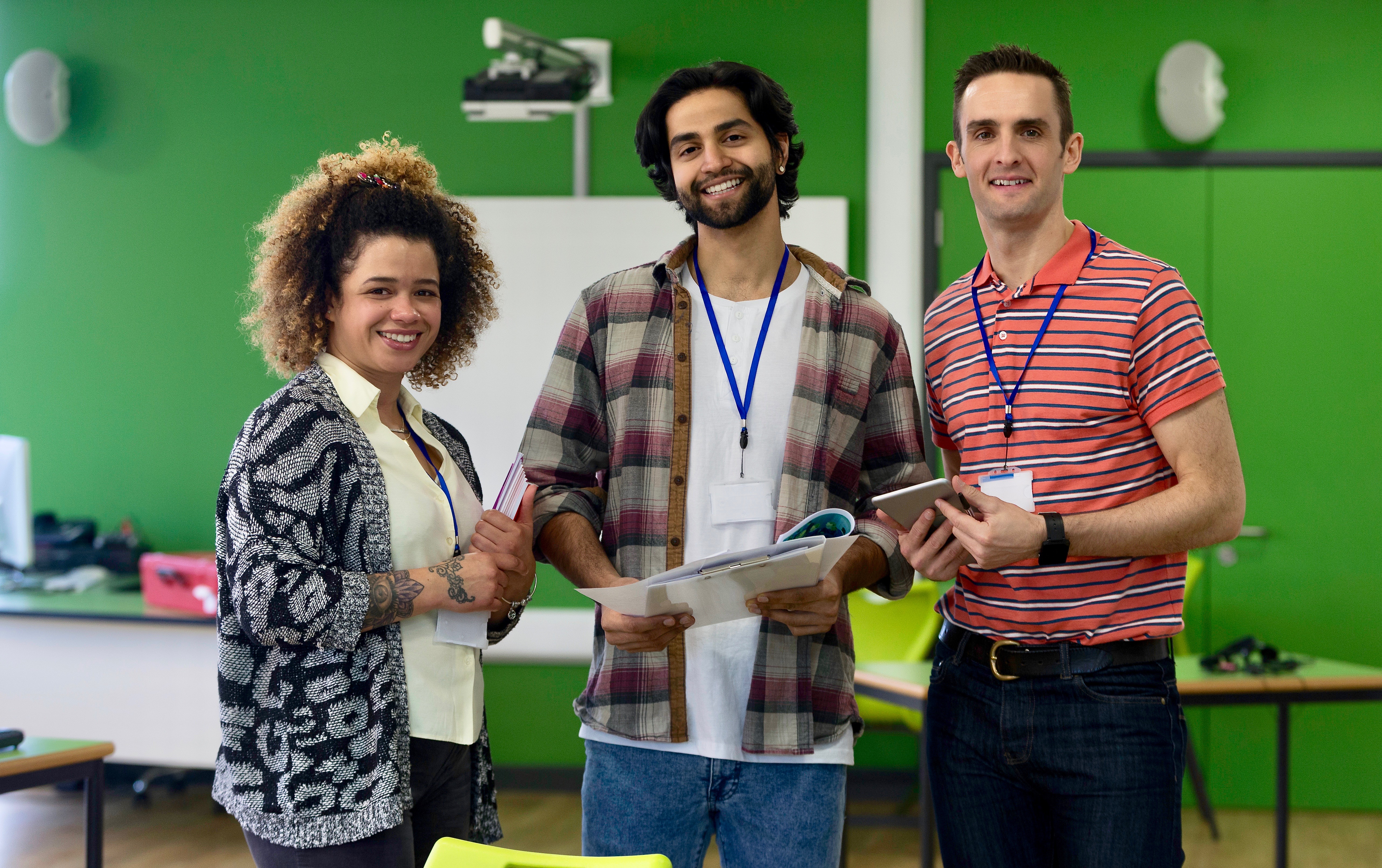Like many of you, I had travel plans that were cancelled last spring due to the pandemic. I was scheduled to attend the International TESOL Convention in Denver, Colorado in late March. The cancellation was disappointing on many levels, but specifically because I always leave these conventions inspired with new ideas to include in my professional work.
In order to redeem some of what was lost, the TESOL Association pivoted to offer a Virtual Convention held in mid-July. It was quite the feat to pull off in such a short amount of time! Although it wasn’t the same as attending the face-to-face convention in Denver, there were definitely some perks–recorded sessions, real-time virtual access to presenters, and reasonable cost. Perhaps you have attended virtual professional development sessions recently and noticed these benefits as well!
There was one session, in particular, that stood out to me as very relevant for what teachers are facing this fall in regard to distance, or remote, learning. The session, How K-12 Districts Served English Learners from a Distance, was led by a panel of educators from three areas of the country who shared how their districts had handled the switch to remote learning last spring.
All provided interesting insights and helpful tips, but I particularly appreciated the information presented by Helene Becker, Director of English Learner Education for Norwalk Public Schools in Norwalk, Connecticut.
Below is a synopsis of Ms. Becker’s presentation, shared with her permission. Take a look, because some of these ideas may inspire your plans for remote learning this fall.
Spring 2020 Challenge #1
The district provided printed work packets for elementary students who did not have technology access. Beginner level ELs could not access the information in the packet due to language barriers.
Solution – The EL department developed their own printed work packets specifically designed for beginning ELs while keeping their language proficiency levels in mind. The information was also translated into the students’ home language.
Challenge #2
More advanced ELs could do the work in the district provided packets but often needed family support. Many families couldn’t read the instructions written in English in order provide this support to their children.
Solution – The EL department translated the packets into the students’ home languages. This way, families were able to understand and help out.
Challenge #3
EL teachers needed to check in regularly with students and families to see how they were doing and to provide needed support. Language barriers existed because not all EL teachers were bilingual.
Solution – Bilingual aides were provided with district cell phones in order to make these contacts without having to use their own devices or phone/data plans.
Challenge #4
Families lacked technology devices beyond a cell phone. Many did not have internet access.
Solution – The district distributed devices (Chromebooks) and hotspots when needed.
Challenge #5
Secondary teachers used Google Classroom to conduct remote learning. Many students had not used Google Classroom or some of the other required apps. As a result, their ability to keep up with their coursework was severely limited.
Solution – The EL department created videos in students’ home languages and simplified English in order to provide instruction to students for using Google Classroom and other apps.
Challenge #6
Due to a multitude of factors, students began to lose interest in completing school work.
Solution – The EL department connected students with social workers who were able to follow up with them and provide support as needed.
Challenge #7
Apparent lack of family support for students’ work.
Solution – The EL department created videos in families’ home languages and posted them to a parent support website. In reality, families wanted to be supportive, but they just didn’t know how. The district website was not sufficient for meeting their needs, and the additional resources provided by the EL department helped to bridge the gap.
Challenge #8
During the spring semester, many companies were providing teachers with free access to useful apps. However, if teachers had not used them before or didn’t feel comfortable figuring it out on their own, the free apps were almost worthless.
Solution – The EL department provided professional development so the teachers knew how to use the available apps.
This last solution was particularly insightful. It’s easy to overlook this type of teacher need. Teachers not only need to know the ins and outs of making technology function, but they may also need ideas about how to USE it to TEACH. It’s one thing to know how to access Nearpod or Edpuzzle, but it’s another thing to effectively utilize it during instruction.
Challenges the Norwalk EL Department will be facing this fall.
- They want a technology “hot line” for families to call to get help with technology. It would need to be available in their native languages.
- They need more district cell phones available for Spanish speaking staff members. (This was a very successful outreach method.)
- K-1 students need touch screens. Chromebooks didn’t work well because students didn’t have enough experience operating them. Touch screens are more familiar to children of that age.
- Materials need to be distributed with families’ schedules in mind. Many working families can’t come to the school to pick up a Chromebook if they are only being handed out between 10 am and 4 pm.
- The EL Department will use multiple means to communicate with families. They realized that they cannot rely on district email blasts to reach all families. Phone calls were key for EL families.
Can you relate?
I don’t think there was anything particularly unique about the challenges faced by the Norwalk Public Schools. Many districts struggled with similar issues. What was so impressive to me was that Ms. Becker led the EL Department to proactively search for solutions. They didn’t simply lament the magnitude of the situation. Instead, they got creative and found attainable solutions to meet their students’ needs. Way to go, Norwalk EL Department!
Thank you to Ms. Becker for allowing me to share some of their district’s challenges and solutions with the Dear Dr. Mooney community. Learning from our colleagues has always been important, but I think it is even more vital now as we all find our way through these uncharted waters. (I’ll follow up with Ms. Becker and let you know how they successfully addressed their fall challenges.)
In the comments below, share something your district did well during the spring remote learning season.
What challenges are you facing this fall?






